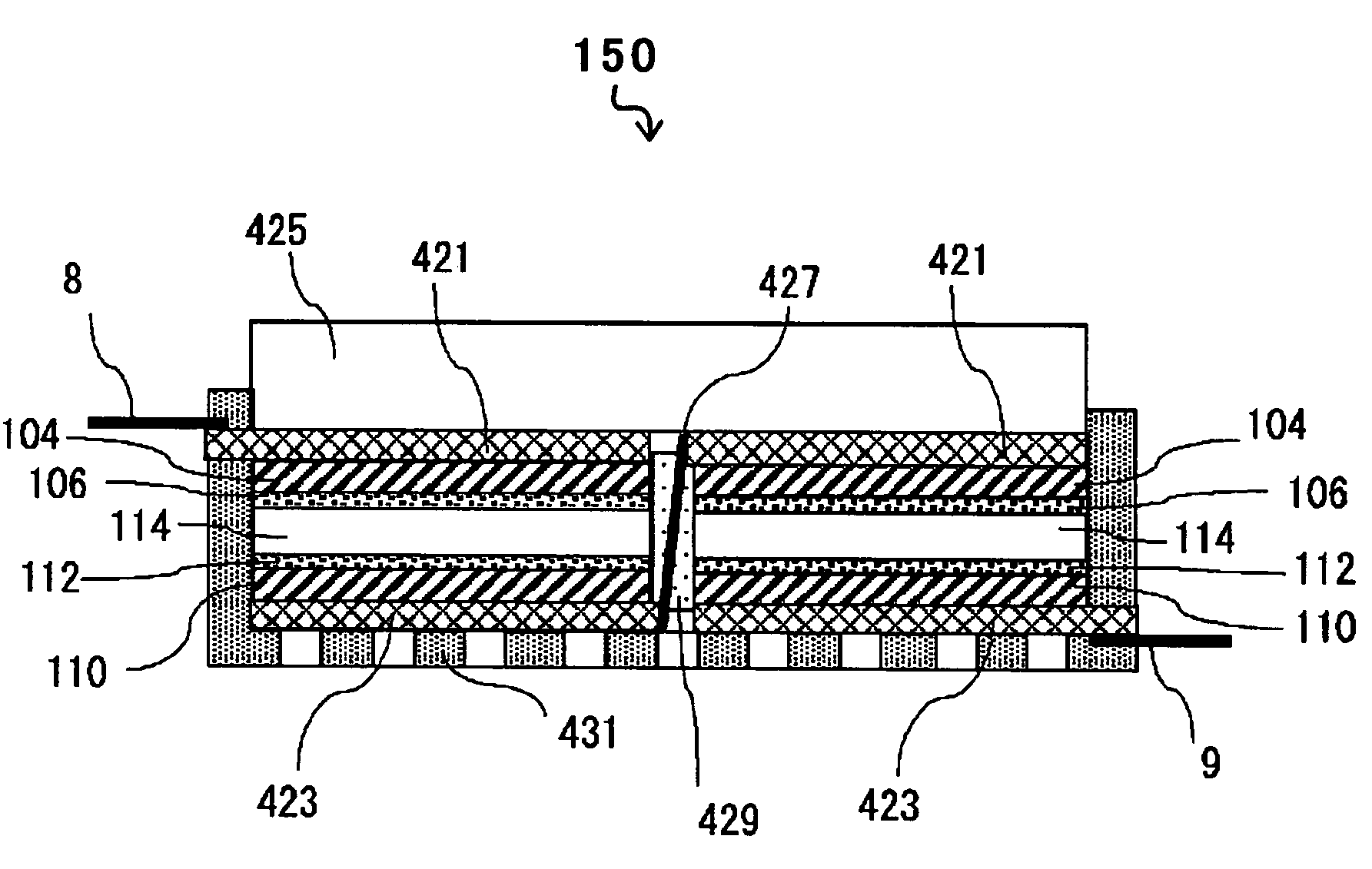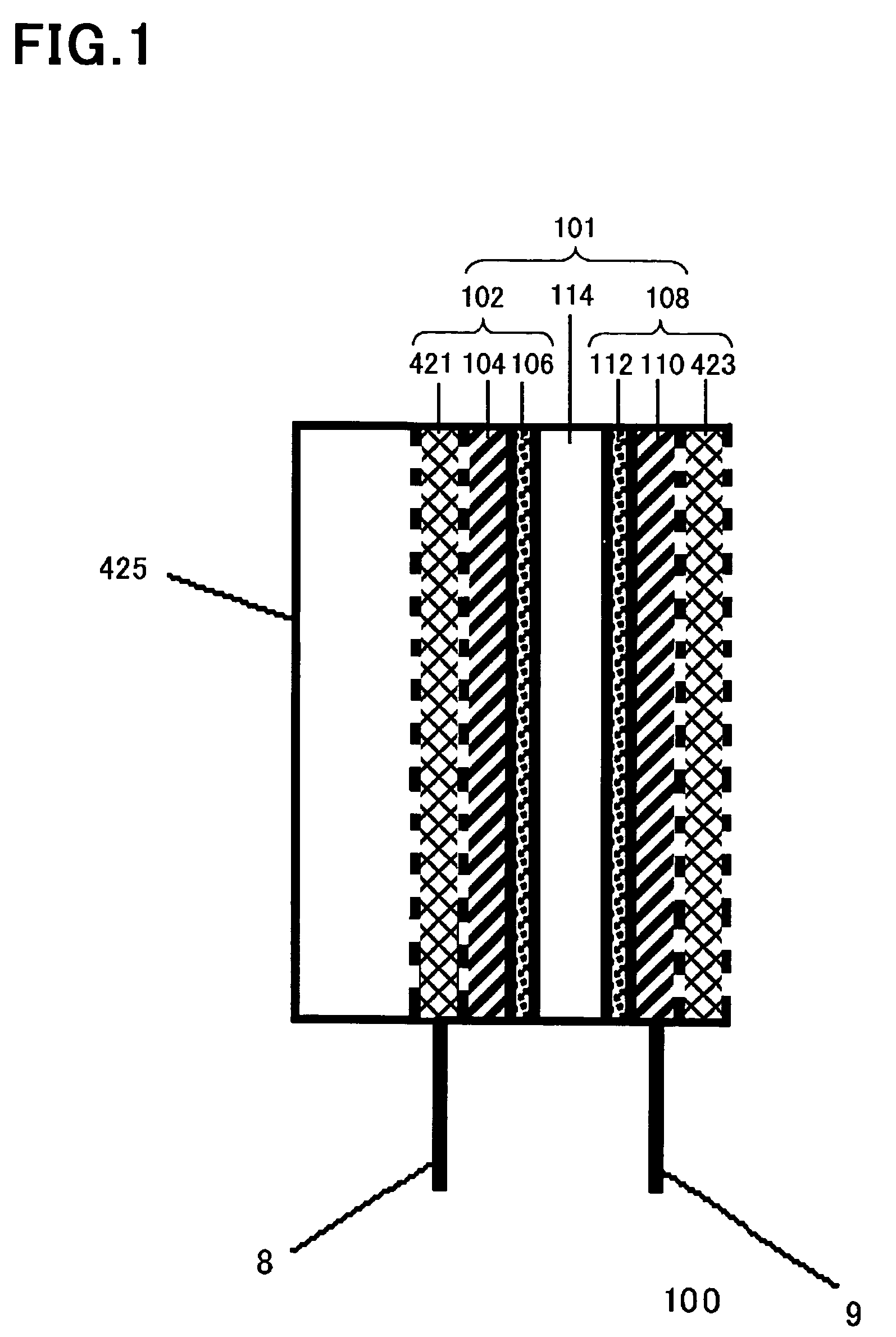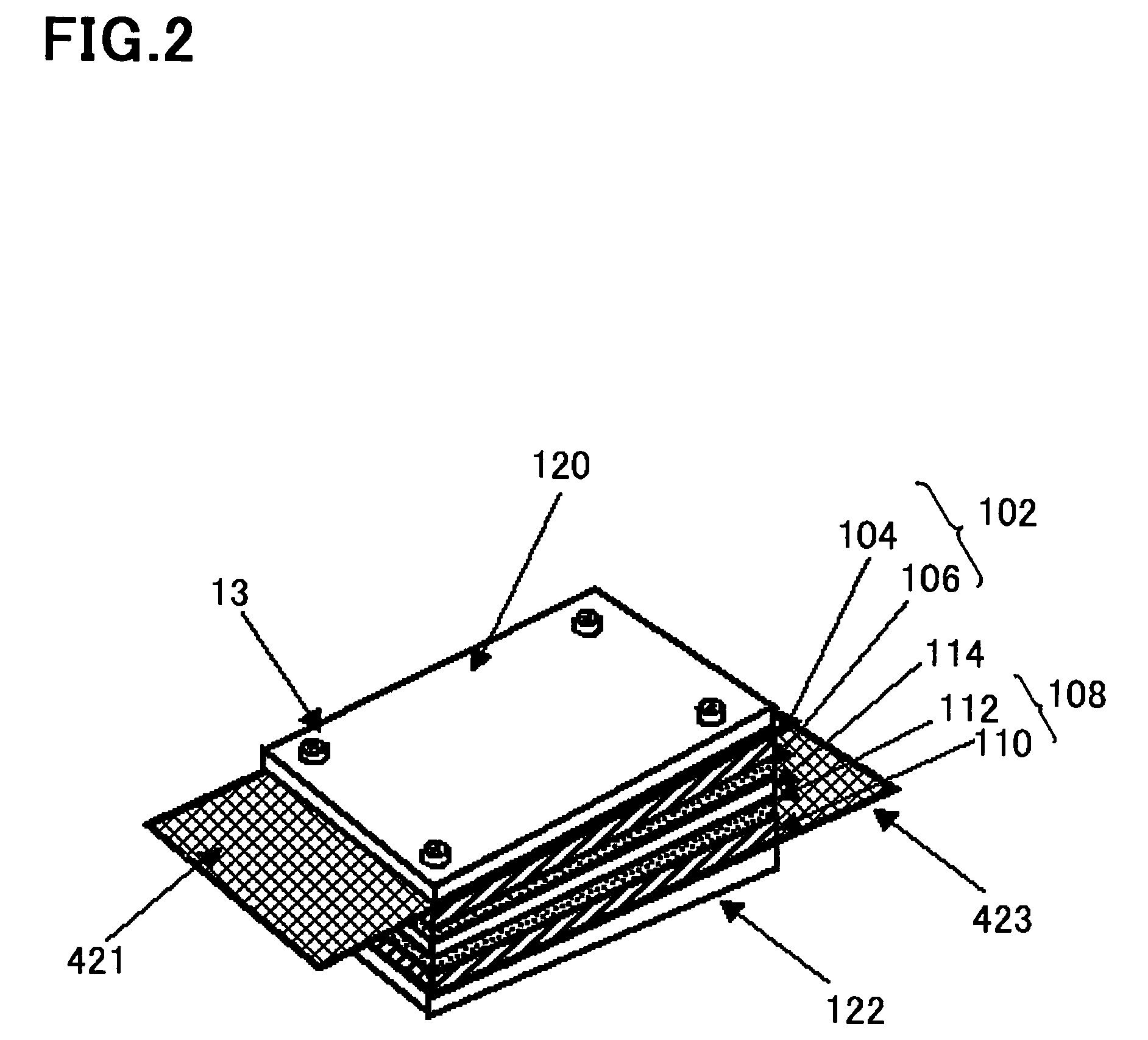Fuel cell, electrode for fuel cell, and method producing them
a fuel cell and electrode technology, applied in the field of fuel cells, can solve the problems of unsolved problems such as the energy density of a lithium ion cell now almost reaching an upper theoretical limit, the increase in the power consumption of an electronic device, and the reduction of the output power of the fuel cell. achieve the effects of simple manufacturing steps, high power, and light weigh
- Summary
- Abstract
- Description
- Claims
- Application Information
AI Technical Summary
Benefits of technology
Problems solved by technology
Method used
Image
Examples
first embodiment
[0114]FIG. 1 is a schematic cross-sectional view of a unit cell 101 in a fuel cell 100 in accordance with the first embodiment of the present invention.
[0115] Though the fuel cell 100 in accordance with the first embodiment includes the single unit cell 101, the fuel cell 100 may be designed to include a plurality of the unit cells 101.
[0116] As illustrated in FIG. 1, the unit cell 101 is comprised of a fuel electrode 102, an oxidizer electrode 108, and a solid electrolyte film 114 sandwiched between the fuel electrode 102 and the oxidizer electrode 108 (a pair of the fuel electrode 102 and the oxidizer electrode 108 is called “catalyst electrodes”).
[0117] The fuel electrode 102 is comprised of a substrate 104, a catalyst layer 106 arranged on one of surfaces of the substrate 104, and a current-collector 421 arranged on the other surface of the substrate 104. The oxidizer electrode 108 is comprised of a substrate 110, a catalyst layer 112 arranged on one of surfaces of the substr...
second embodiment
[0188] A single fuel cell can be fabricated by electrically connecting a plurality of the fuel cells 100 as unit cells to one another.
[0189] An example of such a single fuel cell is illustrated in FIG. 3.
[0190] A fuel cell 150 illustrated in FIG. 3 is comprised of two unit cells each comprised of the fuel cell 100 in accordance with the first embodiment, electrically connected in series to each other. The two unit cells are electrically connected to each other such that the current-collector 421 of one of the unit cells is electrically connected to the current-collector 423 of the other unit cell through a connection electrode 427. The connection electrode 427 is sealed with a seal 429 composed of electrically insulating material.
[0191] The two unit cells commonly have a single fuel reservoir 425. The two unit cells are packed with a package 431. Output terminals 8 and 9 extend from the current-collectors 421 and 423 which are not electrically connected to the connection electrod...
third embodiment
[0195] Another example of a fuel cell comprised of a plurality of unit cells each comprised of the fuel cell 100 in accordance with the first embodiment, electrically connected to one another is illustrated in FIG. 4 as the third embodiment.
[0196] Whereas each of the unit cells 100 in the fuel cell 150 illustrated in FIG. 3 is designed to individually have the solid electrolyte film 114, the two unit cells 100 defining the fuel cell 160 in accordance with the third embodiment, illustrated in FIG. 4, are designed to commonly have a single solid electrolyte film 114. The fuel cell 160 in accordance with the third embodiment has the same structure as that of the fuel cell 150 illustrated in FIG. 3 except the common singe solid electrolyte film 114.
[0197] Since the fuel cell 160 in accordance with the third embodiment is comprised of the unit cells, that is, the fuel cells 100 in accordance with the first embodiment, the fuel cell 160 has the advantages provided by the fuel cell 100 i...
PUM
| Property | Measurement | Unit |
|---|---|---|
| thickness | aaaaa | aaaaa |
| thickness | aaaaa | aaaaa |
| voltage | aaaaa | aaaaa |
Abstract
Description
Claims
Application Information
 Login to View More
Login to View More - R&D
- Intellectual Property
- Life Sciences
- Materials
- Tech Scout
- Unparalleled Data Quality
- Higher Quality Content
- 60% Fewer Hallucinations
Browse by: Latest US Patents, China's latest patents, Technical Efficacy Thesaurus, Application Domain, Technology Topic, Popular Technical Reports.
© 2025 PatSnap. All rights reserved.Legal|Privacy policy|Modern Slavery Act Transparency Statement|Sitemap|About US| Contact US: help@patsnap.com



